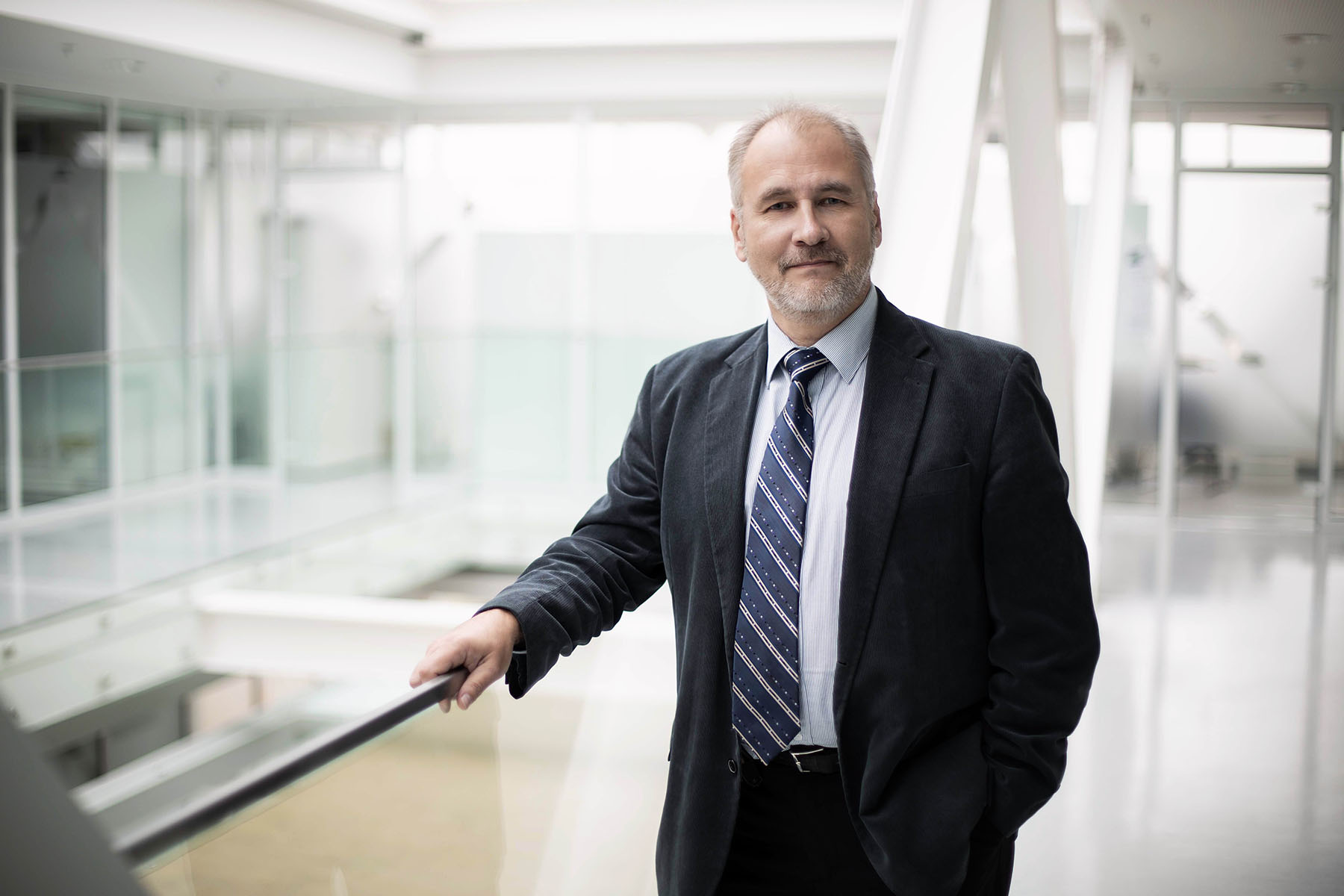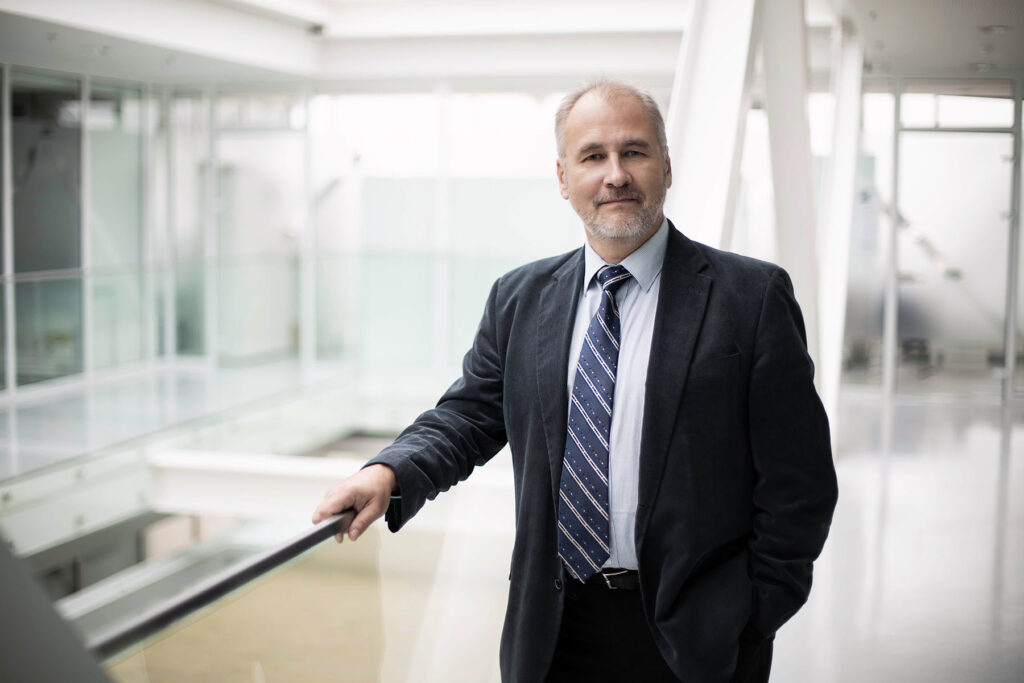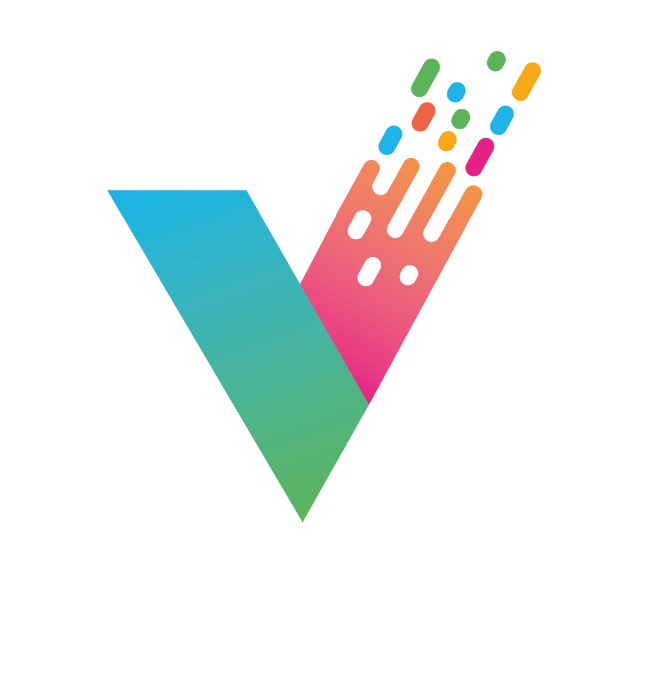
Textiles and engineering: an interview with Rimvydas Milašius

Hello Rimvydas! So you are a full professor in the Faculty of Mechanical Engineering and Design at Kaunas University. It is surprising to learn that an Engineering department deals with textiles – tell us what kind of program your department offers about this.
Why it is surprising? Textile is material and manufacturing of textile going frew mechanical manufacturing – spinning, weaving, knitting. Also, the design of textile structure (not fashion) is totally engineering.
How can the study of textile engineering assist sustainable textile production?
Engineering is especially important when we talk about sustainability of textile. We need to select materials, manufacturing technologies as well as the structure of fabric which is most sustainable. If we can use less yarns for fabric manufacture and get the same properties it will be very great from the sustainability aspect. For example, changing only the weave of fabric we can increase flame retardancy by 20%. That means that we can decrease the amount of yarns needed to receive the product with the same quality. So, structure and manufacturing technologies are also very important for sustainability.
For sustainability it is important not only to know what kind of materials you are using, but also how you manufacture them and how many fibres are used to make the fabric needed in a certain application. If you can save some electrical power, some water or chemicals, some raw material, you will make more sustainable fabric and you will make a positive input in the total sustainability of the textile sector.
You have done some interesting work yourself… We think of textile related to clothing and fashion, but tell us briefly about your work for example in compression textiles for amputees, and in flame-retardant or heat-retardant textiles.
Yes, I have been working in textile engineering for the last 40 years and have already done various investigations on how to develop textile material with better properties. Maybe it is unknown for textile and clothing users, but only 50% of all textiles go to clothing and fashion. The other 50% are technical or functional textiles. It is medical textile, textile for upholsteries, for transport, for firefighters and for military application and many others. Of course, clothing for firefighters also is clothing, but it is a special functional clothing for which fashion is not very important. The same with military applications – bulletproof vests also are clothing, but they differ from everyday clothing.
What about biotextiles, is that an interesting field?
In my opinion biotextile is future of the textile industry. We need to preserve Earth and with synthetic products we will not be sustainable, it is impossible. So, we need to find more materials to use for textile manufacturing. One of them is a waste from agriculture – hemp (which is cultivated for oil and food), banana tree fibres and many other possibilities. In many cases these are discarded, either thrown out or sometimes even burning… Of course, so far, for clothing these fibres are not very good, but why not for some specific application like bags, composites etc.?
What kind of jobs have graduates of your university program gone into? Can you tell us about one or two specific success stories?
Graduates of our bachelor programme are going into industrial work like engineers and technologists in the manufacturing of textile and clothing, consultants for companies which use textile materials for manufacturing other products, designers of materials and fashion in industrial companies as well as personal designers. We guide the higher level in research – usually PhD students, but sometimes also master programme students and even some very active students of bachelor programmes. I mostly work with PhD students and the main success story for them is that they do their investigations, develop something new and defend their dissertation. My last PhD student worked in development of composites from banana tree fibres, published 4 research papers in international journals, attended several conferences with presentations and defended his dissertation. Now he is continuing his research in another university in Lithuania and we have with him a research project financed by the Lithuanian government on a topic connected to his dissertation. One of my former PhD students is General Director of quite a big textile company in Lithuania and one of them is Vice-Rector of a university in Uzbekistan. So, we see a lot of success stories!
If VETRINE stakeholders are interested in learning more about your work and this kind of research or academic path, where do you recommend they begin to become informed?
First, everybody needs to look at information in research journals. It is a first step. Later, it is useful to attend international conferences in the field of textiles and to look for information about research results via the internet. Unlike in the past, the internet offers a lot of possibilities to find necessary information so it is possible to research a fair amount online before eventually taking the step towards higher education.


